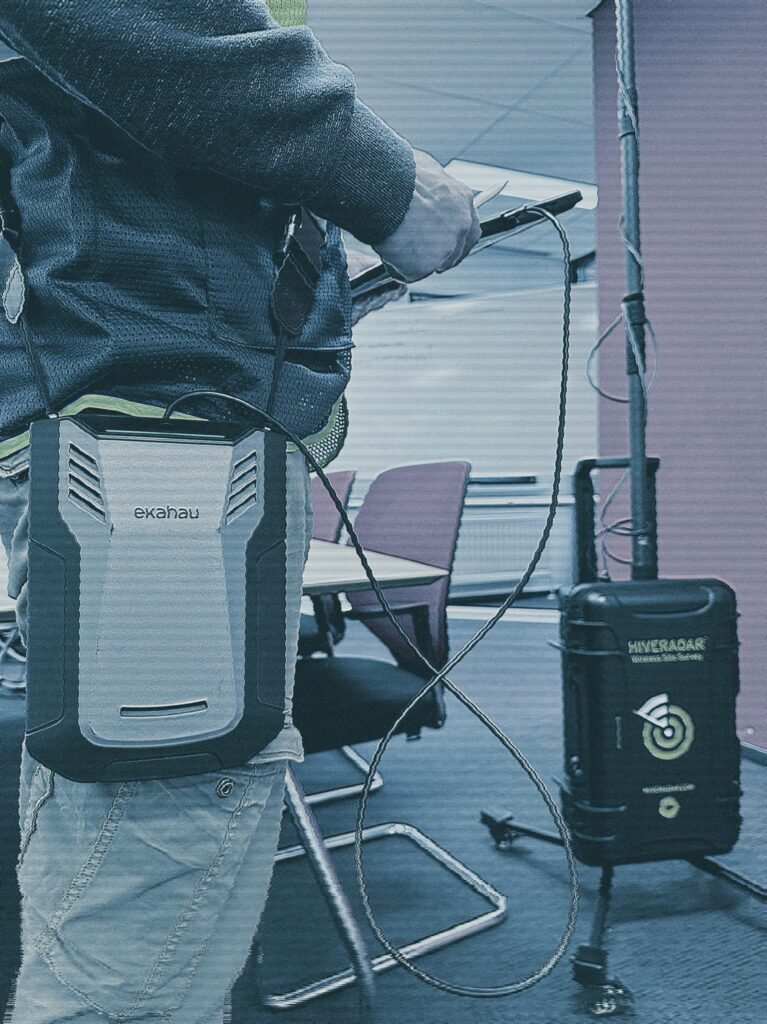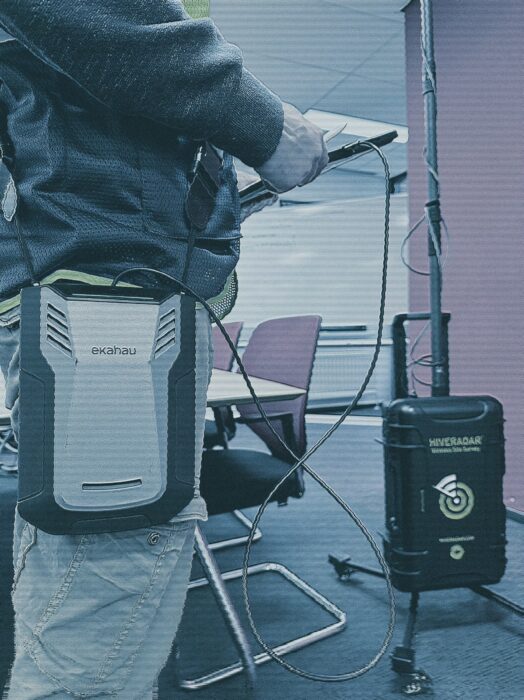Many IT service providers don’t give enough attention to WiFi because it’s a bit different. As a result, they unintentionally deploy it incorrectly or in a way that limits how well it could have worked! This becomes evident to me every week as I validate WiFi networks professionally and observe various environments. Schools, for instance, frequently present opportunities for improvement. Access Points (APs) are often positioned to provide only primary coverage, little attention is paid to the actual locations of the end user devices. As a result, too many devices are often connected to the same access point at the edge of the coverage cell. The Preamble/signal detection is audible up to 4dB above the noise floor by the AP and most clients. It’s transmitted at the minimum data rate of 6 Mbit in the 5GHz band at 20MHz width.
Consequently, clients experience prolonged wait times, slow downloads, and sluggish browsing performance. While this was not an issue in the past when only teachers had laptops, every student now has a laptop for educational purposes from an early age of 8+. At the end of most conversations with customers, there was no design at all.. Or there was a predictive design only without a thorough APoS Wireless Site Survey.
Consider good hardware
Additionally, the quality of the installed access point is often overlooked, by that I mean the hardware components that are used. WiFi complexities increase with the addition of extra fields in frames and multiplexing techniques such as OFDMA (Orthogonal Frequency Division Multiple Access). OFDMA attempts to allow multiple clients to transmit and receive data simultaneously. An access point’s memory plays a crucial role in remembering various client acoustics, including location, and requirements (such as the number of spatial streams and capabilities), facilitating immediate client treatment upon detection by the access point. If an access point can only remember 100 clients, but there are 150 connected, your WiFi won’t perform optimally. Hardware matters, especially for businesses heavily reliant on WiFi; investing in quality components from reputable vendors is advised.
The Importance of Wireless Site Surveys
The question: “Is a wireless site survey necessary for us? ” I had to answer over 40 times in the last 6 years of my career. That question is asked 40 times too much and it can only be answered good if you understand the ‘why’ behind a Wireless Site survey. So here we go… The answer may vary between businesses, but generally, the answer is yes. In my analysis of 90% of WiFi networks, the primary cause of disruptions is a deficient or nonexistent design. Errors during the design process lead to a WiFi network that fails to meet specified requirements, which vary based on the intended use. A careful design process helps map out specific requirements for your WiFi network, ensuring it is the most effective for your business needs.
For small businesses not heavily dependent on WiFi for daily operations, skipping a wireless site survey might be an option. However, if WiFi does not function properly after installation, investing in a wireless survey becomes necessary. Access points might need to be moved or additional connection points created, introducing risks and additional costs. For small businesses with a limited WiFi coverage area, a wireless site survey need not be expensive. In contrast, for medium to large businesses with numerous employees relying on WiFi daily, investigating your workplace environment before purchasing a WiFi system is in your best interest. This small investment can prove financially beneficial in the long run. A wireless site survey is particularly worthwhile for businesses that:
- Operate in locations with heavily congested WiFi environments, such as office buildings.
- Have structures that may cause wireless signal interference, such as warehouses.
- Are situated in locations with solid structures like concrete pillars.
- Operate in an environment where WiFi is crucial for basic activities.
- Require video or voice-over WiFi capabilities (Teams, Whatsapp, and video calls via mobile devices fall into this category).
- Want to avoid any risk of high costs later for adding or relocating connection points and access points.
Wireless site survey necessity
Can we create a design without conducting a wireless site survey? I often hear this question. A wireless site survey is a crucial component of wireless design. By having a Wi-Fi design created with a Pre-Deployment wireless survey, you can be confident that you won’t encounter surprises afterward, and your wireless network will function optimally.
Instead of going for a Wireless Site Survey only a Predictive Survey is possible but their reliability is only as good as the prediction itself. To strengthen the prediction, consider conducting a thorough on-site analysis, including measuring some or preferably all walls. Without a comprehensive site analysis, you may encounter problems such as magnetic walls, iron cabinets, or motion detectors on the 5 GHz band. Explore the environment and check what your neighbors are doing. Does this take the same amount of time as a Pre-Deployment survey?
Although it’s an option, we advise against it, because it’s not reliable enough. If the wireless network doesn’t function properly, you can still consider a Pre-Deployment survey for a redesign after the Wireless validation survey exposes all the flaws.
During an on-site wireless survey, various aspects are examined, including:
- Materials that may interfere with the network.
- The number and type of networks in the vicinity.
- Frequencies of existing networks.
- Gathering desires, requirements, and bottlenecks.
- Identifying potential sources of interference.
- Understanding the LCMI (Least Capable Most Important) device.
- Determining the optimal mounting position for each access point.
AP-On-A-Stick (APoS) in modern times
When I conduct a Pre-Deployment AP-On-A-Stick (APoS) Survey for a company or IT provider, where I assess how the signal propagates within a specific environment, precision is crucial. Walk on both sides of obstacles, such as furniture and walls, clearly indicate your position, and use the correct scale. Be a professional and don’t let the program you use do the work; always think logically.
These days, excellent Wireless Site Survey kits are available, saving you from wasting time on unstable or poor mobile tripods on-site. Investing in such kits is worthwhile because otherwise, conducting a Wireless Site Survey would take more time, the time you need to absorb the environment and its details. Consider the usage of space. Is that door always closed, or does it open every 10 minutes? If the door is closed, do the design criteria still apply? How do users move through the building, where do they enter or exit specific areas? All these aspects are challenging to observe if you spend all your time moving your tripod.

At MetaWiFi, we prioritize quality and enjoy collaborating with suppliers who also prioritize quality. This is why we use the Wireless Site Survey Kit from Hive Radar. We believe that APoS still provides the most reliable results when correctly executed by at least a CWNP professional. If not done properly, you compromise on quality.
Small thoughts about outsourcing a wireless survey
Outsourcing a wireless validation survey (conducted after everything is set up correctly) is possible, provided you teach the person the right skills to collect accurate data. You can then analyze the collected data yourself, potentially saving the client money. For a Pre-Deployment survey including design, some too many variables and details can be easily overlooked by someone who has no experience or doesn’t know the 802.11 protocol well. Just don’t do it unless you are onsite and already aligned with a predictive design that could work.
Outsourcing a validation survey to a drone?
Thinking about all the safety measures that should be taken in place to do this. Additionally, outsourcing to a human includes the advantage of having a local professional familiar with the norms, values, and culture of that country that a drone doesn’t have. Also, a drone will rely on the techniques of augmented reality and fix its position, if it understands cultures and can correct its position during the survey it will be a good alternative for validation survey. But moving the Tripod for you it needs to be more than just a flying drone. Thinking about Irobot
If you agree with all of this but don’t have time?
Hire us. We are happy to help to put your IT service in good shape by delivering an excellent Wireless Site Survey for your customers!
